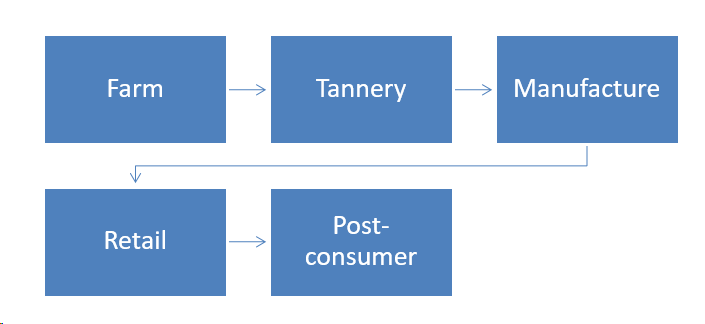End of a Journey, Beginning of a New
Summary
At the end of Q3 2018 the not-for-profit foundation Centre for Citizenship, Enterprise and Governance (CCEG) will have completed the Seratio Ecosystem to MVP (minimum viable product) level ready to start implementation in Q4 trials with significant partners in cities, regions and countries around the world. This has been a 7 year journey, started in May 2011, to create structures for good that allows us to travel through our lives guided by the beliefs we hold dear to our hearts. By establishing a digital currency of intangible value, we can use AI (Artificial Intelligence) Bots on our mobiles to navigate our interactions with organisations, products, projects, processes and even people based on their provenance and how aligned they are to our own values. Retailers will be able to incentivise and target to differing degrees whole communities that match most closely their corporate values. We will be able to exchange our token instruments of non-financial value with assets of financial value.
Now moving to engagement and integration within global markets across public, private, civil society and community sectors, the Seratio EcoSystem will be governed by its participants through a Distributed Autonomous Foundation (DAF) which itself will integrate with other DAO (organisations) structures representing the Non-Governmental Organisations (NGO’s) both small and big. We are an international community of over 120,000 with a vision which are ready to deliver, but the next phase is about market need, scalable adoption, and professional operational delivery to give us a world based on sustainable social impact. Our common goal is to form a world transacting on the optimisation of Total Value where both Financial and Non-Financial Value are of equal importance and driven by our individual and collective Values.
The Journey (2011-2018)
We started our journey in May 2011 and created digital impact measurement, the Social Earnings Ratio, which became the “fastest adopted social impact analysis metric in the world” (The Vatican, 2014). The S/E Ratio, a corollary to the financial P/E Ratio, digitises non-financial value, turns sentiment into financial value, and does it through Fast Data in under 10 seconds. Applied successfully to Social Value Act 2012, Modern Slavery Act 2015, EU Commissions, etc and a plethora of academic commissions, CCEG became the leading provider of SaaS platforms across many sectors, with its own journal Social Value & Intangibles Review.
In early 2016 we moved from just the measurement of value to the movement of value, adding a transaction of value capability through blockchain. We now have a CCEG Blockchain UN Lab which conducted UK’s first Initial Coin Offering in October 2017 with UK Financial Conduct Authority (FCA) guidance, an institutional blockchain consultancy and advisory service Rothbadi & Co, a large IP DLT consortium CyberFutures, and a university educational value forum www.EfficiencyExchange.ac.uk.
Justas Structuras Creare (Creating Just Structures) #goodistrending
Our aim remains to enable open source structural change for good, having researched 12 Whitepapers, a membership association for Blockchain Alliance for Good, and the world’s first peer reviewed academic journal Frontiers in Blockchain, jointly launched with a mainstream academic publisher.
Development Cycle

The integrated components of the Seratio EcoSphere are described above with the following easy to read non-technical guides to understand the linkages:
- Seratio Blockchain
- Seratio token system (SER)
- The S/E Metrics Engine (eg. Social Value, Personal Value etc)
- Commissions from communities looking for Cryptocurrencies aligned to their interests (eg. Women’s Coin, Student Coin, Black Value Token, Property Token, City Token, EduCoin, Islamic Coin, Impact Token, etc … 20 so far).
- Microshare Exchange
- Distributed Autonomous Foundation
- Provenance Engine
- Securities Exchange
- AI Bot Wallet
Current Status

The system as a whole is 85% complete (green shaded above) at present moment with 100% expected by October 2018. Originally expected to complete by July 2018, the additions of the DAF and Exchanges has extended the timescales a further 2-3 months. Although the securities financial exchange (yellow shaded above) will take further still with Swiss FINMA approval required, the security asset exchange is not an immediate requirement for day one as many others exist which we can use.
Moving Forward with Partners
With the end of the visioning and development cycle, comes a new challenge as we move into pilots and trials of our MVP to test and improve the Seratio system. We have in place already one pilot with a UK brand Mencap which has been delayed now to December 2018 due to their financial constraints, several demo’s and launches in November 2018 in Amsterdam and June 2019 in Copenhagen with Informa Plc (FTSE 100), as well as city launches in Taizhou (August 2018), Yiwu (October 2018), and country launches in Wales (August 2018) and Moldova (November 2018); other partners are now in discussion.
The Seratio Ecosystem is aided by AI to assess the complex analytical data available and to transparently steer consumers becoming their online friend. Similarly for public sector institutions, private sector corporates, civil society NGO’s – and their leaders – to become their values driven guide
As with all the work at CCEG, the Seratio EcoSphere is open source, and part of our contribution towards the United Nation’s 17 Sustainable Development Goals.
If you wish to be a partner please feel free to contact us at blockchain.lab@cceg.org.uk






